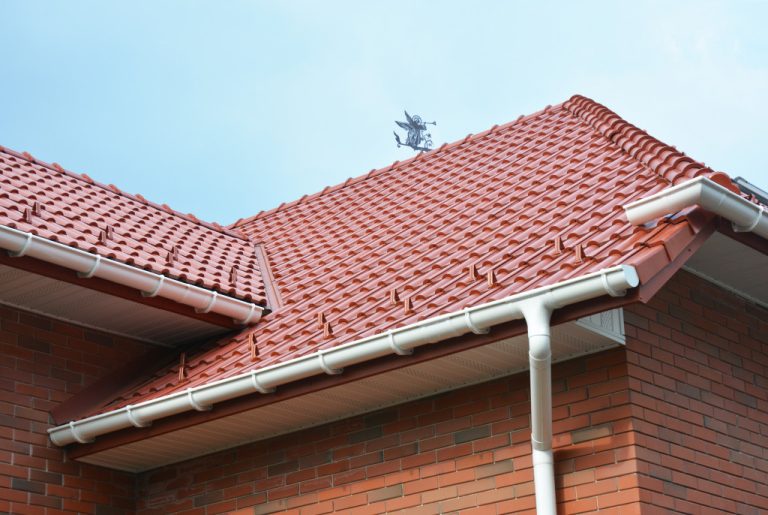- To protect your home from water damage, it’s essential to maintain the roof and apply roof coatings and sealants regularly.
- Gutter and downspout maintenance are essential for preventing clogs that can lead to water overflow and damage to your foundation.
- Waterproofing exterior walls involves sealing them so that no water seeps in and damages interior walls.
- Installing a drainage system can help channel rainwater away from your property, reducing the risk of flooding or water damage.
- Protect your windows and doors by inspecting for gaps or leaks, and use weather stripping to keep the water out.
Water damage is one of the major concerns homeowners face. Rainwater can cause significant damage to your home, leading to expensive repairs and loss of valuable possessions. It’s crucial to take the necessary measures to protect your home from rainwater to avoid that.
One of the most important reasons for rainproofing your home is to avoid water damage. When rain penetrates your home, it can cause damage to your walls, roofs, and even your foundation.
Additionally, excessive exposure to rainwater can affect the structural integrity of your property. Taking action and preparing your home for rainy days is essential.
This article will go over some essential steps that will help you rainproof your home.
Roof Maintenance and Protection
The roof is one of the most critical elements of your home’s structure. It’s necessary to ensure it’s always in good condition to protect your home from water damage.
One of the ways to maintain your roof is by checking it regularly to ensure that it’s free from debris, such as leaves and twigs, which can cause water to accumulate on your roof. A buildup of water can lead to leaks and other water damage.
Clearing Debris From the Roof
Regularly clearing debris from your roof is a simple yet effective way to protect it from water damage. It’s vital to use a sturdy ladder and ensure that you’re always wearing protective gear when clearing debris.
It would be best to remove debris from a broom or leaf blower gently. Avoid using tools that can scratch or damage your roof.
Repairing Damaged or Missing Shingles
Damaged shingles are one of the most common reasons for roof leaks. Fixing them immediately is essential to prevent water from penetrating your home. Look for any signs of cracked, missing, or worn-out shingles.
Replacing damaged shingles is a straightforward process that anyone can do with basic DIY skills. However, if you’re unsure, hiring a professional is always best.
Applying Roof Coatings or Sealants
Roof coatings and sealants can help protect your roof from water damage by creating a barrier against water. These products are easy to apply and can help extend the lifespan of your roof. Different coatings are available, and choosing the appropriate one for your roof is integral.
Gutter and Downspout Maintenance
Gutters and downspouts are critical for water management and protecting your home from water damage. It’s essential to maintain them regularly to prevent clogs and other issues. Here are some simple maintenance tips:
Cleaning Gutters and Downspouts Regularly
Gutters and downspouts should regularly be cleared of debris to ensure they function correctly. A clogged gutter can lead to rainwater overflow, damaging your home’s foundation or causing water to penetrate your home’s walls.
Repairing or Replacing Damaged Sections
Another essential step in maintaining a functional gutter system is repairing or replacing damaged sections. If your gutters are damaged, they won’t work effectively, and rainwater may seep into your property.
Regularly checking gutters for damage, such as cracks, holes, or rust, can save you costly repairs later. If you spot damage, acting quickly and repairing or replacing the damaged sections is essential. Your gutters will thank you!
Hiring a Professional Gutter Contractor
If you’re uncomfortable working on your gutters, hiring a professional gutter contractor is best for the maintenance and repair. A professional gutter contractor will have the experience and expertise to ensure your system is functional and practical.
They can also install gutter guards in order to thwart debris from amassing in your gutters, thus, reducing the need for cleaning.

Waterproofing Exterior Walls
The first step towards rainproofing your home is to ensure the exterior walls are waterproof. Waterproofing your exterior walls involves sealing the walls so that water does not seep through and cause damage to the inside of your home.
Inspecting and Repairing Cracks or Gaps
Over time, cracks and gaps may develop in your walls due to natural causes such as the settling of the foundation or climate changes. These cracks and crevices allow rainwater to seep inside, causing severe damage to your walls.
Regular inspection and repair of the cracks and gaps is a must to avoid this. Fill the holes with a sealant or epoxy, or patch them with a cement mixture. This will prevent rainwater from entering your home through the cracks or holes.
Applying Waterproof Coatings or Sealants
Applying a waterproof coating or sealant to your existing roof or walls will protect your home from rain for longer. Apply a waterproof coat or spray a sealant on your roof to ensure it is watertight.
Sealants should also be applied to the windows to protect them from leakage or damage. This will prevent water damage and protect your property.
Installing Drainage Systems
A drainage system may be necessary to protect your home from heavy rainfall. A drainage system will channel the water away from your home, reducing the risk of flooding or water damage.
If your yard has low spots, installing a French drain, a surface, or a sub-surface drainage system is a great solution. The drainage system can be a gutter, a downspout, or a French drain. Ensure that these systems are clear and well-maintained to function effectively.
Protecting Windows and Doors
Protecting windows and doors should be a top priority when rainproofing your home. Damage or leakage through windows and doors can cause the home to flood, which brings water damage to the walls and surfaces.
Prevent this by closely inspecting all windows and doors and sealing any gaps that could let water in. Use weather stripping or caulking to keep the water out and the cold air.
This method also can improve the air quality inside your home and make it more energy-efficient.

Rainwater can cause significant damage to your home, but taking the necessary steps to protect your property can save you thousands of dollars in repairs.
Maintaining your roof, gutters, and downspouts can help you avoid water damage and increase the lifespan of your home. Preparing for rainy days is always better to protect your home from water damage.



